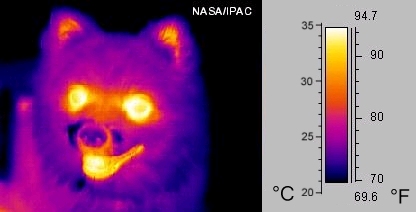Cool/Hot Tech
By Gabe Kraljevic
Posted on 2017-11-07
 I have been thinking about getting a thermal imaging camera. Specifically, an attachment for an iPhone that allows it to do thermal imaging. If you had one in your classroom, what would you use it for? – R., Alaska
I have been thinking about getting a thermal imaging camera. Specifically, an attachment for an iPhone that allows it to do thermal imaging. If you had one in your classroom, what would you use it for? – R., Alaska
This is a great idea! Having a hands-on device to explore phenomena beyond our senses is an excellent tool for a science class. When I think of using thermal imaging technology (and I would include infrared thermometers) the following comes to mind:
Convection/Conduction: Set up an ambient temperature aquarium and turn on the heater. Track the convection over time through photos or time-lapse video. Heat or cool different materials and rank them in terms of conduction. Experiment with surface area, fans, colors, and their effects on heating and cooling.
Homeotherms vs. Poikilotherms: compare the body temperatures of “hot-blooded” and “cold-blooded” animals at different ambient temperatures.
Temperature gradients: Many students don’t really grasp what a gradient is. Have them graph temperature vs. distance for a variety of radiant heat sources.
Heat of vaporization: Students will discover that the temperature of boiling water is constant. This is where an infrared thermometer is excellent to use. Point it at a beaker of boiling water. The glass (measured from the side) will register 400+ °C while the water (measured from the top) will be at 100°C.
Hypo- and hyperthermia (within reason!). Have students over- and underdress for outside and map their temperature patterns and changes. Compare this to a dog. Most mammals handle hypothermia and hyperthermia differently than humans.
Engineering: Have students design insulated containers that keep a beverage warm for the longest possible time. Thermal images will allow them to assess and modify their creations.
Hope this helps!
Photo credit: By NASA/IPAC [Public domain]
Disclaimer: The views expressed in this blog post are those of the author(s) and do not necessarily reflect the official position of the National Science Teaching Association (NSTA).


